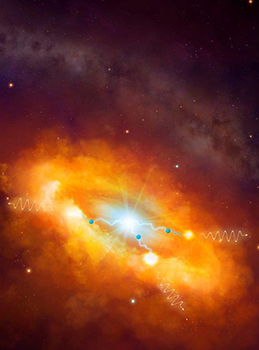Latest News Archive
Please select Category, Year, and then Month to display items
19 November 2018
|
Story Valentino Ndaba
|
Photo Xolisa Mnukwa
 “I’m an embodiment of the dreams of those whose lives have been marked by great struggles,and I want to propel and re-write the African child’s narrative.” - Priscilla Brandt
“I’m an embodiment of the dreams of those whose lives have been marked by great struggles,and I want to propel and re-write the African child’s narrative.” - Priscilla Brandt
Priscilla Brandt, first-generation LLB graduate, saw the opportunity to upgrade her career through the Graca Machel Trust, and grabbed the bull by its horns. Brandt pitched her skills and expertise to one of the trust CEO’s who happened to be part of a GLS panel discussion which was held on the University of the Free State (UFS) Bloemfontein Campus. Shortly afterwards, the organisation contacted her with an offer for a Legal and Governance research internship.
The Graca Machel Trust is an established Pan-African organisation that focuses on child health and nutrition, education, women’s economic and financial empowerment, leadership, and good governance. The trust functions under the leadership of Graca Machel, who is one of the world’s leading advocates for the rights of women and children and has stood as a social justice and political activist for years.
Brandt said her journey started in the township streets of Galeshewe, Kimberley, and was characterised by infinite difficulties and resolute challenges. However, her circumstances in no way deterred her from standing fervently in her trust and pursuit of a full and purpose-driven life.
According to Brandt, her university career involved working at several odd jobs concurrently in order to help take care of her family and to financially maintain herself throughout her varsity years. Despite her adverse circumstances, she managed to collect a vast array of domestic and international academic achievements.
She was the first female chairperson of the Black Lawyers Association Student Chapter at the UFS, served on the UFS F1 Leadership for Change programme, and represented the university in Japan. In addition to that, she formed part of a work and study-abroad programme in America for three months. She was a delegate to the International Youth Leadership Conference in the Czech Republic and was selected by the office of the Commonwealth Secretary General for the 33Sixty Conference in Singapore. Furthermore, she was nominated by the UK Humanitarian Affairs organisation to be part of the eighth University Scholars Leadership Symposium at the United Nations in Thailand.
Her knowledge and belief in her capabilities and work ethic drives Brandt to constantly challenge herself and strive for a life and character that embodies excellence.
Two scientists part of team that discovers the source of the highest energy cosmic rays at the centre of the Milky Way
2016-03-22

Artist's impression of the giant molecular clouds surrounding the Galactic Centre, bombarded by very high energy protons accelerated in the vicinity of the central black hole and subsequently shining in gamma rays.
Artist's impression: © Dr Mark A. Garlick/ H.E.S.S. Collaboration Spotlight photo:
Dr Brian van Soelen and Prof Pieter Meintjes of the UFS Department of Physics.
Photo: Charl Devenish
|
H.E.S.S. (High Energy Stereoscopic System) scientists publically revealed their latest galactic discovery in the international science journal, Nature, on 16 March 2016. These scientists were able to pinpoint the most powerful source of cosmic radiation – which, up to now, remained a mystery.
Part of this team of scientists are Prof Pieter Meintjes and Dr Brian van Soelen, both in the University of the Free State (UFS) Department of Physics. Dr Van Soelen explains that they have discovered a proton PeVatron – a source that can accelerate protons up to energies of ~1 PeV (10^15 eV) – at the centre of the Milky Way. The supermassive black hole called Sagittarius A has been identified as the most plausible source of this unprecedented acceleration of protons.
The protons are accelerated to Very High Energy (VHE) gamma rays. The energy of these protons are 100 times larger than those achieved by the Large Hadron Collider at CERN (the European Organization for Nuclear Research).
According to Dr Van Soelen, the fact that this research has been published in Nature demonstrates the importance and pioneering nature of the research conducted by H.E.S.S. The H.E.S.S. observatory – operational in Namibia – is a collaboration between 42 scientific institutions in 12 countries.
In 2006, H.E.S.S. was awarded the Descartes Prize of the European Commission – the highest recognition for collaborative research – and in 2010 the prestigious Rossi Prize of the American Astronomical Society. The extent of the observatory’s significance places it among the ranks of the Hubble Space Telescope and the telescopes of the European Southern Observatory in Chile.
“The next generation VHE gamma-ray telescope,” Dr Van Soelen says, “will be the Cherenkov Telescope Array (CTA), which is currently in the design and development stage.” Both Dr Van Soelen and Prof Meintjes are part of this project as well.
H.E.S.S. has issued a complete statement about the paper published in Nature.